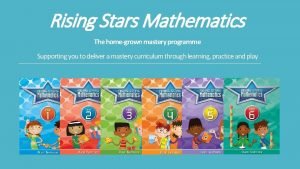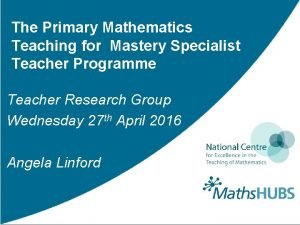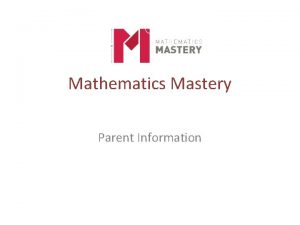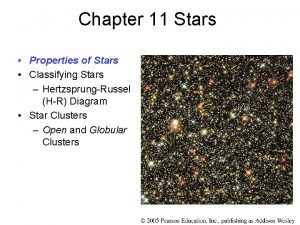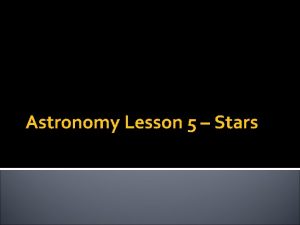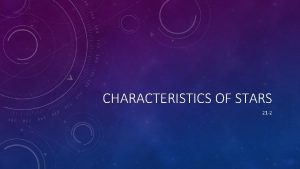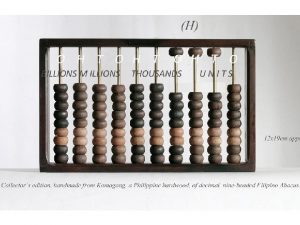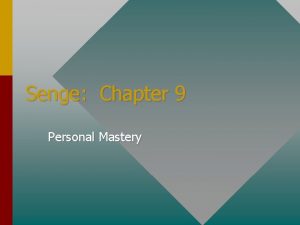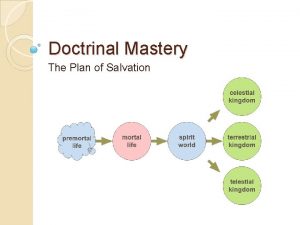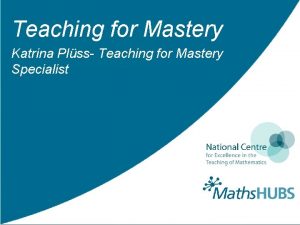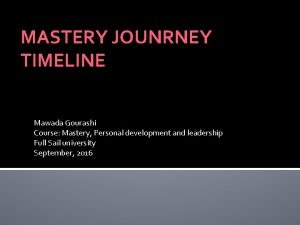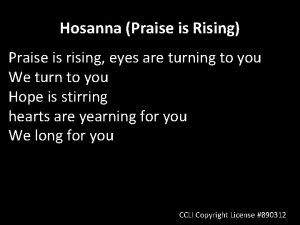Rising Stars Mathematics The homegrown mastery programme Supporting


























- Slides: 26

Rising Stars Mathematics The home-grown mastery programme Supporting you to deliver a mastery curriculum through learning, practice and play

Rising Stars Mathematics is a complete solution to delivering the 2014 National Curriculum for Mathematics. It adapts the best teaching and learning approaches from the UK, Shanghai and Singapore to develop maths mastery in every classroom.

The Rising Stars Mathematics programme at a glance


The structure of the programme Rising Stars Mathematics provides a ‘light touch’ comprehensive structure that allows you to retain the control, freedom and flexibility to adapt the timing and teaching activities to meet the needs of your own class. This means that you can focus your time and skills on teaching outstanding lessons in your own way. In the Rising Stars Mathematics Textbooks, concepts are developed in small steps to build on prior learning through guided practice and are revisited in later units. There are 14 units for each year, providing a carefully structured learning journey. Each unit will take approximately 2 to 3 weeks to complete. Timing will depend on how long you think your class needs to spend to achieve mastery. Each unit includes 2 to 4 concept spreads, each of which should be focused on for about a week, moving on when concepts are mastered.

Rising Stars Mathematics is built around four themes: Number sense This theme is about understanding our number system, with a focus on how our numbers work and fit together, and applying this understanding in different contexts. Units on Additive Reasoning and Multiplicative Reasoning are usually preceded by a unit on Number Sense, which explores the understanding needed for the subsequent unit. Multiplicative Reasoning This theme is about understanding multiplication and division together and the relationship between them, and using this understanding to solve problems. Additive Reasoning This theme is about understanding addition and subtraction together and the relationship between them, and using this understanding to solve problems. Geometric Reasoning This theme is about understanding the properties of shapes and the relationships between them, using this understanding to solve problems related to measure. It is also about understanding movement within space, and using this understanding to solve problems. Measures and statistics are included throughout as contexts for Number Sense, Additive Reasoning and Multiplicative Reasoning. Algebra appears in all themes as part of generalisation of mathematical understanding.

Why have we chosen Rising Stars Mathematics for our school? • Designed and written by experts with experience of UK classrooms • Written specifically to deliver the aims of the 2014 National Curriculum • A quality textbook programme that is rigorous yet flexible

Developed and written by an expert team The structure, pedagogy and approach has been designed by experts: Caroline Clissold Caroline is a highly experienced primary school teacher, mathematics adviser and trainer. She is the author of numerous primary mathematics resources. Every concept and every lesson idea has been written by a mathematician with extensive experience of a variety of UK classrooms: Jo Chambers Caroline Clissold Belle Cottingham Paul Broadbent Cherri Moseley Heather Davis Cherri is an active member of the Mathematical Association and currently works as a freelance mathematics consultant and author. She has written many mathematics resources for primary schools. Linda Glithro Steph King Emma Low Cherri Moseley Maria Rundle The content has been thoroughly reviewed by a primary specialist: Paul Broadbent With over 30 years in primary education as a teacher, deputy head and teacher trainer, Paul currently works as an independent maths consultant. He has written over 400 books for teachers, pupils and parents in the UK and around the world.

Delivering the aims of the 2014 National Curriculum The national curriculum for mathematics aims to ensure that all pupils become fluent in the fundamentals of mathematics, including through varied and frequent practice with increasingly complex problems over time, so that pupils develop conceptual understanding and the ability to recall and apply knowledge rapidly and accurately. The national curriculum for mathematics aims to ensure that all pupils reason mathematically by following a line of enquiry, conjecturing relationships and generalisations, and developing an argument, justification or proof using mathematical language. The national curriculum for mathematics aims to ensure that all pupils can solve problems by applying their mathematics to a variety of routine and non-routine problems with increasing sophistication, including breaking down problems into a series of simpler steps and persevering in seeking solutions. Rising Stars Mathematics: • Uses the concrete–pictorial–abstract approach to embed understanding of essential concepts • Encourages reasoning through a combination of open mathematical discussions and thoughtfully structured practice • Provides full guidance on effective problem-solving strategies, including dedicated CPD videos • Provides numerous opportunities to rehearse essential facts, such as number bonds and multiplication facts • Adopts a coherent approach to teaching efficient calculation strategies and written procedures • Provides regular and varied practice, including bare practice and complex problems • Provides extensive teacher support to help teachers model reasoning • Embeds accurate mathematical vocabulary into every lesson to give children the tools they need to communicate their reasoning • Includes problem-solving questions and open investigative activities in every unit, with full support for the teacher on how to lead these sessions

Following the NCETM guidelines for a quality textbook programme Rising Stars Mathematics has been written to follow the guidance “A high quality mathematics textbook scheme is an educational resource that can be used by pupils both in lessons and independently, and that also provides both subject knowledge and pedagogy support to teachers of mathematics. It is a comprehensive learning tool, providing support for the development of both procedural fluency and conceptual understanding in mathematics. ” NCETM Mathematics Textbook Guidance, January 2015 the NCETM provided on quality textbook schemes in January 2015.

The five principals and pedagogical beliefs behind Rising Stars Mathematics

Mathematical understanding is developed through using concrete, pictorial and abstract representations.

High-quality textbooks used effectively as teaching tools support teachers in explaining mathematical concepts clearly, encourage investigative thinking, questioning, discussion and application.

Children will only fully understand topics and master concepts through step-by-step teaching and lots of appropriate practice of the concept itself, as well as within different contexts. This means teaching concepts at a slower pace and dealing with each aspect of that concept in very small steps, in order to give children time to embed understanding.

Mathematics is an interconnected subject in which children need to be able to make connections across mathematical ideas. This enables them to develop fluency, mathematical reasoning and problemsolving skills.

Using precise mathematical vocabulary from the beginning is vital in ensuring children’s understanding. Rich talk and discussion between teachers and children using mathematical terminology is an essential tool in the ongoing assessment of conceptual understanding.

An introduction to using Rising Stars Mathematics

1 Preparing to teach a unit Before you begin teaching, ensure you’ve familiarised yourself with the components and structure of Rising Stars Mathematics , either using the introductory videos or reading the introductions in the Teacher’s Guides. There are short, sharp CPD videos for every strand. Then, look carefully at the Teacher’s Guide for the relevant unit, thinking about your medium term plan roughly how long it might take to cover the unit and which parts may require a little more time than others.

2 Getting started with a unit There is a double-page spread in the Teacher’s Guide for each spread in the Textbook, outlining the focus of the unit, prior learning required, suggested activities and ways to measure understanding and assess mastery. In the Textbook, the engaging pictures show maths in everyday life and are accompanied by questions which prompt open discussion. The Teacher’s Guide provides suggested discussion points and ideas for activities. The questions are usually open to allow the discussions to roam freely and help you assess what the children already know.

3 Exploring new concepts The left-hand page of the Textbook provides a child-friendly summary of the concepts. It begins with two characters discussing a common misconception and then leads on to an explanation of the concept supported by visual representations. On the right-hand page of the Textbook you will find a set of practice activities to draw on. Steps 1 and 2 are usually straightforward, bare practice of the concepts taught. Step 3 is usually practice in context – often statistics and measures. Step 4 is a more open-ended investigation. All answers are provided in the Teacher‘s Guide and you can use the whiteboard modelling tools and the animations within the e-textbook to support your teaching.

Step 1 The teacher reviews the concepts to be taught, background knowledge and teaching ideas. All the information in one place saves time and allows the teaching professional to focus on high-quality lesson design. Step 2 The teacher introduces the concept using concrete resources and pictorial and abstract representations, Textbook explanations and the digital toolkit. Using the Textbook and Teacher’s Guide together Step 3 The teacher guides children through different types of practice using variations and questioning to dig deeper and secure understanding. Timing is flexible to allow them to ensure concepts are mastered. Step 4 The teacher offers additional support as necessary to ensure progress for all children, and enriches learning through follow-up ideas and activities.

Using the digital resources to enhance lessons e. Textbook animations Child-friendly animations bring essential concepts to life and secure mathematical vocabulary and understanding. Whiteboard Modelling Toolkit This teacher’s toolkit provides even more choice of mathematical representation to further support the CPA approach, saving you hours of preparation time with anytime, anywhere access.

4 Consolidating and expanding understanding The Teacher’s Guide offers ideas for supporting and broadening understanding. There is a Gameboard for every unit in the Textbook to practice the concepts. Every Gameboard has two suggested variants plus the opportunity for children to invent their own game using the board. Further consolidation can be found in the Practice Book. This has carefully-structured practice, including variation, for all concepts in the Textbook. At the end of the Teacher Guide you will also find a selection of ready-made homework activities for every unit.

5 Assessing progress and mastery The review pages and assessment tasks will help you assess whether children have mastered the concepts in the unit. In the Teacher’s Guide there is a quick summary of the concepts mastered so that you can decide whether you might need to work further on a particular concept or move on to the next unit. For summative assessment, the Rising Stars Mathematics Halftermly Progress Tests are an ideal accompaniment as they follow the same order of teaching as Rising Stars Mathematics.

The digital resources Create a free My Rising Stars account at www. risingstarsuk. com/user/register and select our school. On publication, the following materials will be accessible through your account: CPD videos for each strand Teacher Toolkit (interactive whiteboard tools to support modelling) e. Textbooks (enhanced with hotspot animations to explain concepts) PDFs versions of the printed materials A variety of other resources (Planning templates, glossaries, answers, links to research papers, curriculum matching grids, etc. )

Rising Stars Mathematics The home-grown mastery programme Supporting you to deliver a mastery curriculum through learning, practice and play
 There are millions of stars in
There are millions of stars in Rising stars maths teacher's guide
Rising stars maths teacher's guide The lion and the mouse climax
The lion and the mouse climax Primary mathematics specialist teacher programme
Primary mathematics specialist teacher programme Bàn tay mà dây bẩn
Bàn tay mà dây bẩn Hình ảnh bộ gõ cơ thể búng tay
Hình ảnh bộ gõ cơ thể búng tay Mật thư anh em như thể tay chân
Mật thư anh em như thể tay chân Từ ngữ thể hiện lòng nhân hậu
Từ ngữ thể hiện lòng nhân hậu Tư thế ngồi viết
Tư thế ngồi viết V cc cc
V cc cc Voi kéo gỗ như thế nào
Voi kéo gỗ như thế nào Thẻ vin
Thẻ vin Thơ thất ngôn tứ tuyệt đường luật
Thơ thất ngôn tứ tuyệt đường luật Khi nào hổ mẹ dạy hổ con săn mồi
Khi nào hổ mẹ dạy hổ con săn mồi Thế nào là hệ số cao nhất
Thế nào là hệ số cao nhất Diễn thế sinh thái là
Diễn thế sinh thái là Vẽ hình chiếu vuông góc của vật thể sau
Vẽ hình chiếu vuông góc của vật thể sau Lp html
Lp html Phép trừ bù
Phép trừ bù Lời thề hippocrates
Lời thề hippocrates Chụp tư thế worms-breton
Chụp tư thế worms-breton đại từ thay thế
đại từ thay thế Vẽ hình chiếu đứng bằng cạnh của vật thể
Vẽ hình chiếu đứng bằng cạnh của vật thể Quá trình desamine hóa có thể tạo ra
Quá trình desamine hóa có thể tạo ra Thế nào là mạng điện lắp đặt kiểu nổi
Thế nào là mạng điện lắp đặt kiểu nổi Khi nào hổ con có thể sống độc lập
Khi nào hổ con có thể sống độc lập Các châu lục và đại dương trên thế giới
Các châu lục và đại dương trên thế giới

